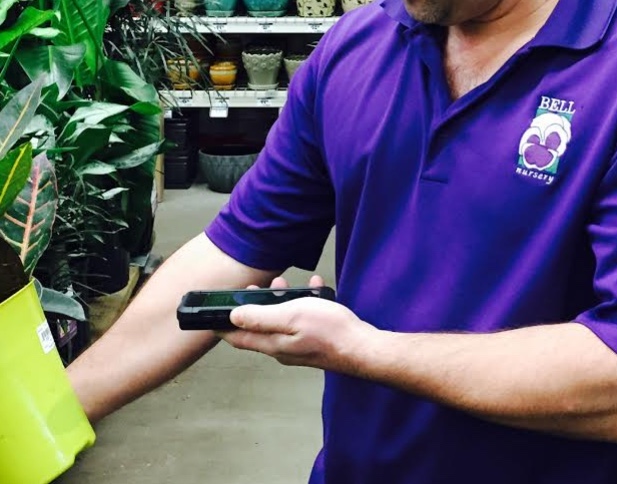Moving From a Paper to Digital Inventory and Logistics Tracking System
 By Alex Seretis, Account Executive, Infinite Peripherals, Inc.
By Alex Seretis, Account Executive, Infinite Peripherals, Inc. -
Despite the growing use of digital and mobile solutions throughout various industries, many organizations still rely on outdated, paper-based systems or old, expensive radio frequency (RF) devices for inventory management and logistics. These systems often require manual filing, can cause missing or duplicated paperwork and may hamper efforts to quickly track specialized, high-value assets. Although companies may acknowledge these issues, they can be hesitant to replace a familiar, time-tested way of running operations with a new digital solution that takes them into unknown territory.It is important to understand that changing to a digital inventory management or logistics tracking system is more than just replacing a legacy product or service; it’s creating an entirely new way of conducting business. Adapting to a new technology can be difficult, requiring leadership buy-in and time to assess, accept and implement. However, when a company can capitalize on technology, the transition is ultimately worth it, resulting in multiple benefits that improve business and save money.Benefits of Mobile SolutionsTo enhance inventory management and logistics tracking, new solutions add barcode scanners to consumer devices, such as smartphones and tablets, to take advantage of their versatility, including:1. Cost – Using consumer devices reduces the price of a handheld solution to approximately $750-$1,200 each, which is more economical than traditional RF scanners that can cost more than $1500 each. This can be particularly helpful in remote warehouses where it may not be cost-justified to install a complete RF network.2. Form factor – Lighter, with larger screen sizes and better resolution, consumer handheld devices run on iOS, Android™ or Windows, which deliver a familiar, intuitive user interface.3. Accuracy – Eliminating paper and the opportunity for human error consistently leads to significant cost savings, greater efficiency, increased productivity and less waste, which, in turn, can lead to labor reduction or redeployment.4. Management on-the-go – With mobile solutions, staff and management no longer are tethered to PC workstations, enabling them access to warehouse management system (WMS) reports and KPIs from warehouse aisles, thereby facilitating immediate decision-making with real-time data.5. Integration with other business systems – Software running on the mobile device integrates warehouse and logistics data with other company functions, such as accounting, which can issue invoices or credits in a timelier manner for faster receivables.6. Additional functionality – Cameras and video capabilities can be used for recording damaged inventory. Signature capture expedites customer pick-ups and returns, and mobile printers can create instant labels. The devices also can manage shipping and receiving, serial number tracking and time and attendance.7. Training capabilities – Because employees already are familiar with these consumer devices, mobile solutions can dramatically reduce the training and employee transition process due to ease of use.Proven Results and ROIBell Nursery, the primary plant supplier to 178 Home Depot stores in seven states and the District of Columbia, encountered many challenges with its previous paper-based inventory process. Staff manually counted items on the floor with a clipboard, pen and paper and then faxed the counts to the office to be entered a second time into a spreadsheet.For a business that covers 400-600 SKUs in 200 inventory locations, this system was inefficient and prone to errors. In addition to being time-consuming, it also created significant inventory waste, as Bell Nursery annually supplies Home Depot with 100,000 flowers – perishable goods that are thrown away if they end up in the wrong place.After adopting a mobile solution using an iPhone® equipped with a barcode scanner for supply chain and inventory management, Bell Nursery decreased waste by 50 percent, saving $7 million annually. Bell Nursery employees – as many as 1,700 in the busy season – now manage inventory more quickly and accurately with UPC codes, providing real-time access to precise inventory data.Michigan CAT, an authorized dealer of Caterpillar heavy equipment, power systems and engines, formerly used handheld scanners that were limited to inventory management and were unable to differentiate a text field from a number field, which caused errors in areas such as quantities and order numbers. Equipped with a full keyboard, the heavy devices didn’t integrate with other workflows and tended to freeze, requiring a hard reboot and interrupting work flow and productivity.The switch to mobile devices resulted in significantly greater functionality, including better interface between the warehouse and the service and the delivery departments, faster customer pick-ups, instant analyses on employee productivity and improved quality control.And a U.S.-based component supplier expedited order processing with a barcode scanner, but found that the data remained on the scanner until the end of a shift, when it was connected to a computer and results were synced. Therefore, order accuracy was not guaranteed, as real-time data was unavailable while the scanners were in use – which was particularly problematic when processing and shipping orders the same day.The company now has about 50 percent of its employees using a more robust solution with an iPod touch® and a 2D barcode scanner in the warehouse. The system displays a green light if the barcode matches the product being picked, and a red light if there is a mismatch. With staff now scanning approximately 70,000 details per day, a significant increase in productivity, the company estimates that the improved order accuracy resulted in more than $10 million in savings in the first year alone.Best Practices for TransitioningAlthough every business has individual considerations specific to its organization, here are guidelines for moving to a digital/mobile-based inventory and logistics tracking system:
- Identify the organization’s overall mobile deployment goals, estimated budget and projected timeline for each phase of the project.
- Research hardware and software providers that partner with customers to understand business needs, customize solutions and deliver ongoing training and support. When evaluating solutions, ensure capability to complete all designated tasks, with potential to add different functions in the future.
- Continually communicate the benefits of the new system and how it will help staff perform responsibilities with greater convenience, efficiency and accuracy.
- Establish measureable test criteria and interim benchmarks as the solution is developed and pilot tested.
- Identify a project leader/s that staff can approach with questions and feedback.
- Address device charging procedures, device check-out and return, accessories such as hand straps and cases and extra units in case of breakdowns.
- Deploy units company-wide, and measure results using metrics for productivity, accuracy, labor assignment, etc. Compare data to existing benchmarks from the former WMS.
- Share results, including data, testimonials and anecdotes with the company.
About Infinite Peripherals:
The first company to mobilize iOS for enterprise, Infinite Peripherals, Inc. has deployed more than one million enterprise mobility solutions across multiple industries, including retail, logistics, warehousing, healthcare and hospitality. Mobility experts since 1999, IPC continually delivers innovative hardware and software solutions that equip businesses to run more efficiently and more profitably. Complementing its leading Linea Pro®, Infinea Tab® and Infinea® mPOS product lines are an unparalleled commitment to customize solutions for each customer, accompanied by dedicated personal service and partnership. For more information, please visit ipcmobile.com. Connect with Infinite Peripherals at facebook.com/

About Alex Seretis
A four-year veteran at Infinite Peripherals, Alex Seretis began as an Account Manager and now is an Account Executive, where he manages enterprise sales for the Eastern U.S. His clients have benefited from a variety of IPC products to enhance field services, retail operations and warehousing.
